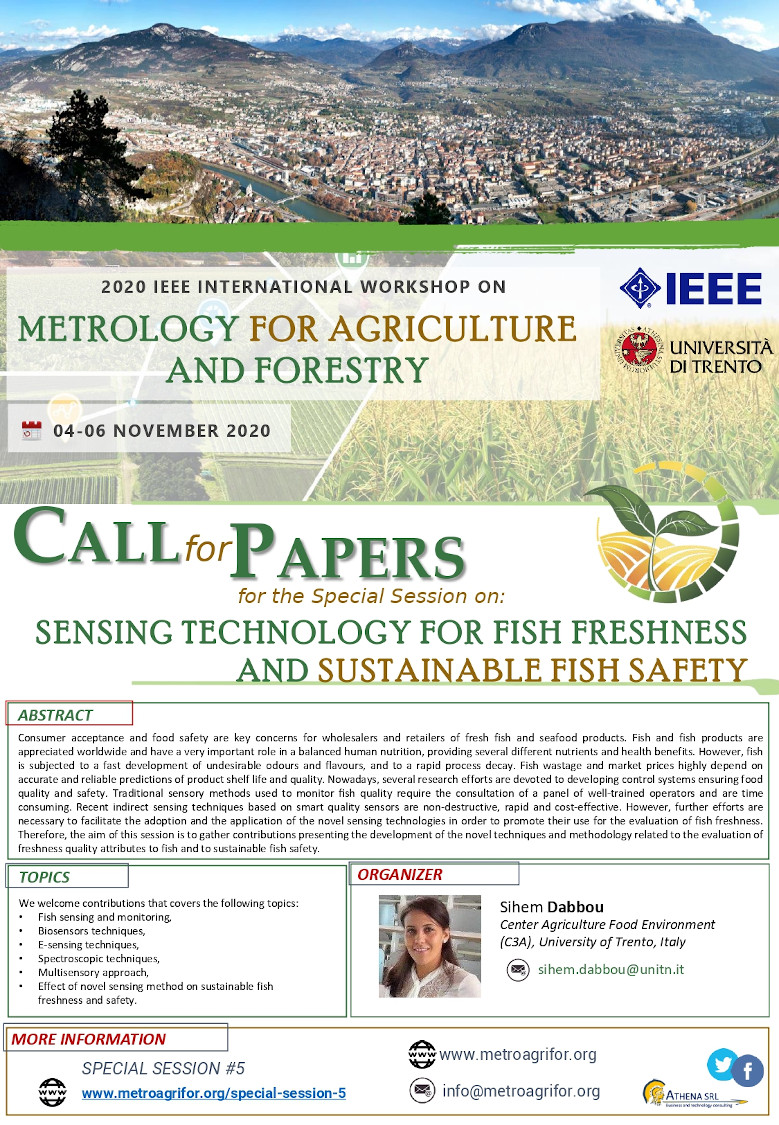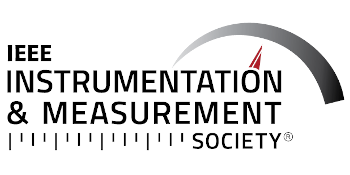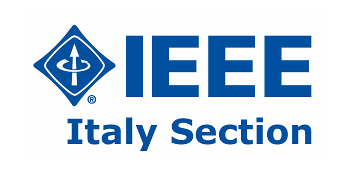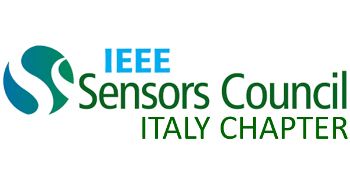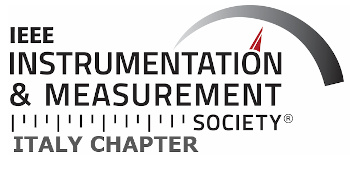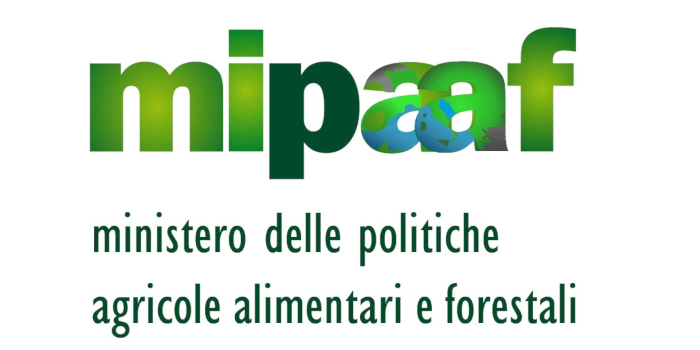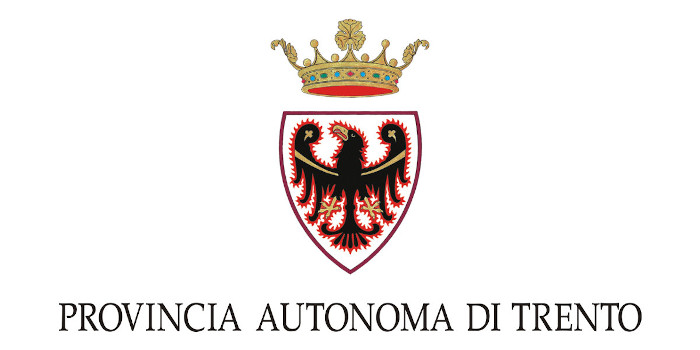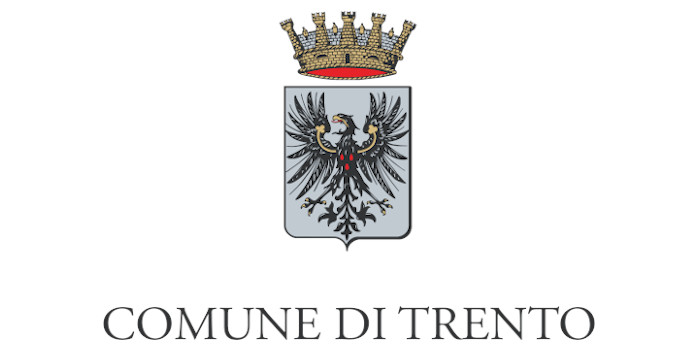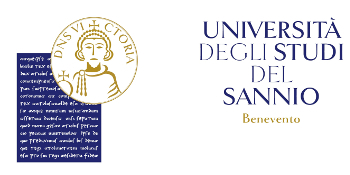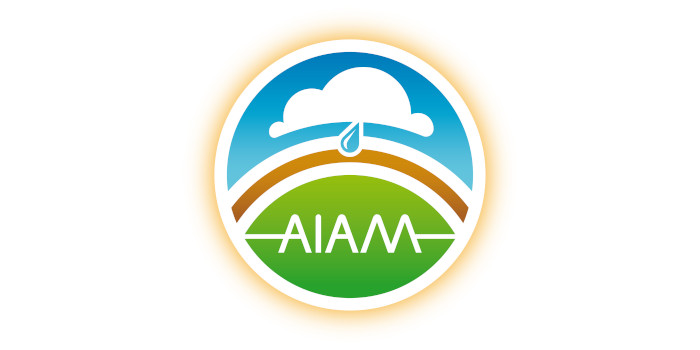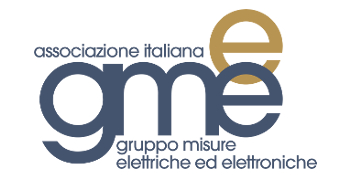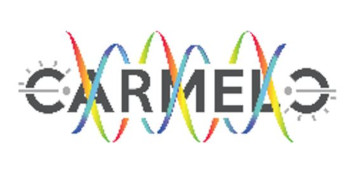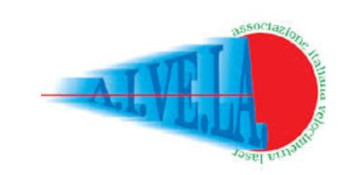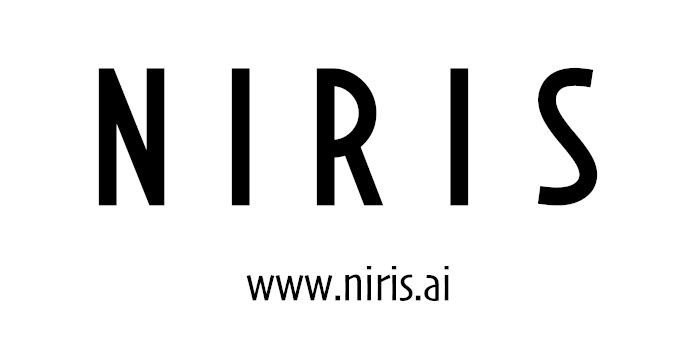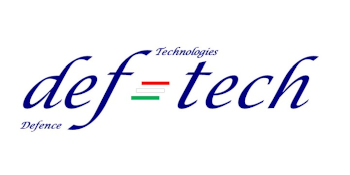Sensing technology for fish freshness and sustainable fish safety
ORGANIZED BY
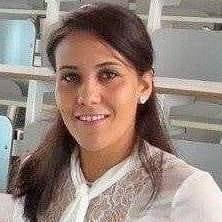
Sihem Dabbou
Center Agriculture Food Environment (C3A), University of Trento, Italy
ABSTRACT
Consumer acceptance and food safety are key concerns for wholesalers and retailers of fresh fish and seafood products. Fish and fish products are appreciated worldwide and have a very important role in a balanced human nutrition, providing several different nutrients and health benefits. However, fish is subjected to a fast development of undesirable odours and flavours, and to a rapid process decay. Fish wastage and market prices highly depend on accurate and reliable predictions of product shelf life and quality. Nowadays, several research efforts are devoted to developing control systems ensuring food quality and safety. Traditional sensory methods used to monitor fish quality require the consultation of a panel of well-trained operators and are time consuming. Recent indirect sensing techniques based on smart quality sensors are non-destructive, rapid and cost-effective. However, further efforts are necessary to facilitate the adoption and the application of the novel sensing technologies in order to promote their use for the evaluation of fish freshness. Therefore, the aim of this session is to gather contributions presenting the development of the novel techniques and methodology related to the evaluation of freshness quality attributes to fish and to sustainable fish safety.
TOPICS
We welcome contributions that covers the following topics:
- Fish sensing and monitoring,
- Biosensors techniques,
- E-sensing techniques,
- Spectroscopic techniques,
- Multisensory approach,
- Effect of novel sensing method on sustainable fish freshness and safety.
ABOUT THE ORGANIZERS
Dr. Dabbou is an assistant professor in the Centre Agriculture Food Environment, University of Trento (Italy). She has competences in rabbit, poultry and aquaculture sciences with particular attention to nutrition and product quality. She is involved in trials on Agro-industrial by-products and insects as potential raw material in rabbit, fish and poultry nutrition in collaboration with Italians and foreign research groups.


